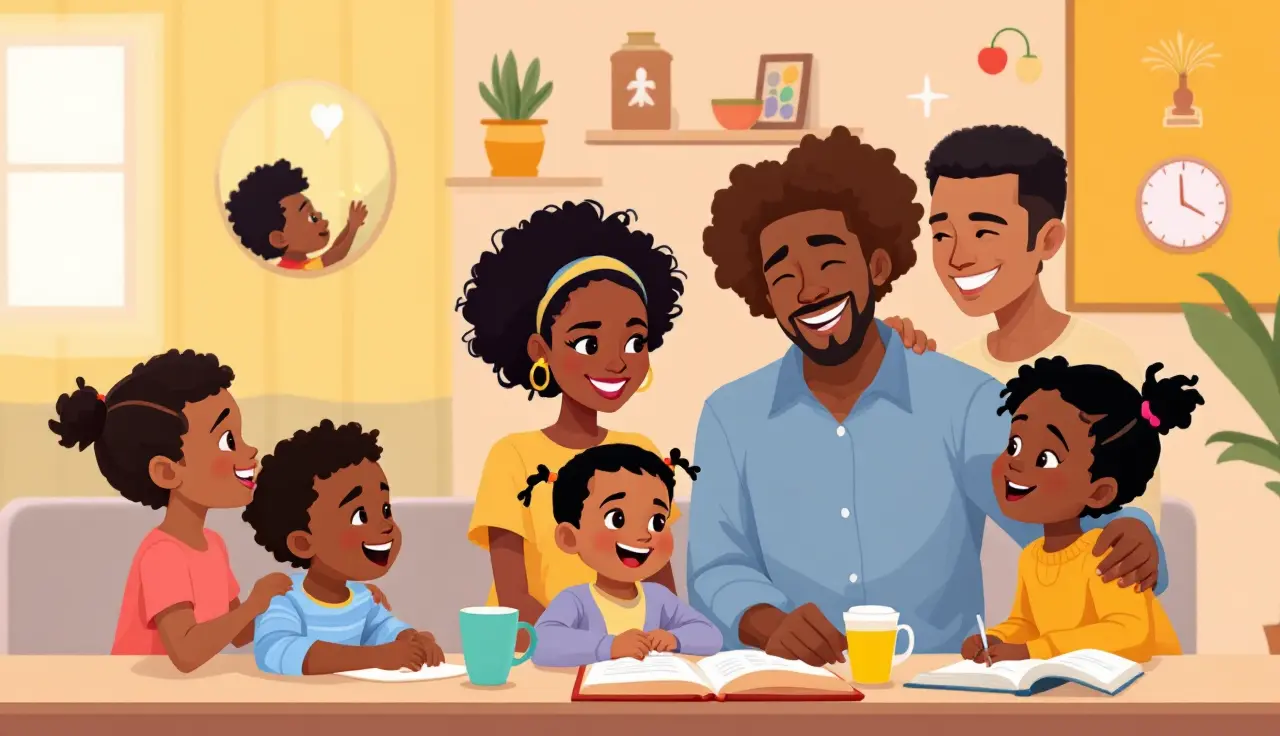By Lionel Kubwimana
••8 min read
One sibling loves learning your home language. The other avoids it. This guide shows how to balance motivation, frustration, and family harmony.

In the heart of Minneapolis, a Burundian family faces a challenge many diaspora families know well: helping both children stay connected to their roots through language.
Meet Amina and Kamau. Amina flips through her Kirundi workbook with joy. She loves learning the language of her parents. Her younger brother Kamau? He prefers English cartoons and chats in school. Their parents want to raise proud bilingual children. But they often feel stuck between excitement and worry.
This contrast is common. Across cities like Atlanta and Seattle, African families watch one child thrive in their home language while another pulls away. That difference can hurt. It raises big questions. Why does one child love the language and the other resist? Can parents keep the culture alive without pushing too hard?
This post dives into those questions. You’ll find stories, research, and real solutions. We’ll explore how birth order, personality, and environment all play a role. More importantly, you’ll learn how to balance support, motivation, and patience—so each child grows in their own way without losing your family’s roots.
Sibling behavior around language often depends on birth order and personality.
For example, in one Burundian family learning French:
Key Insight: Birth order shapes how children see language. Some feel burdened. Others feel free.
To help:
Kids don't learn in a vacuum. Friends, teachers, and schools all affect how children see language.
Let’s say one sibling goes to a school with French clubs and fun activities. They may get excited. But their sibling in a different school may not have that same spark.
Key Insight: A child’s world outside home can make or break language motivation.
What can parents do?
How parents talk about language matters. Even good intentions can backfire.
In one family:
Key Insight: Each child needs a different kind of support. Fair doesn’t mean “the same.”
To reduce friction:
Motivation grows when kids feel seen and heard.
Try these simple ideas:
One boy became interested in Spanish because he loved Latin music. He wanted to understand the lyrics. Over time, that turned into real fluency.
Practical Tip: Let each child’s interest guide the plan. Tie language to what they already love.
This reduces pushback and increases engagement.
A positive home makes all the difference.
Key Insight: Fun, shared activities reduce comparison and boost connection.
To try at home:
Over time, these habits grow confidence and curiosity in both siblings.
Let’s look deeper at how birth order and personality mix.
One family saw:
Practical Solution: Adjust your tone and goals for each child. Invite older kids to lead a game or lesson. Let younger ones be cheerleaders and learners.
This honors personality while still growing language.
Environment matters—and it’s not always equal between siblings.
Take two siblings:
It’s no surprise they feel differently about learning.
Tip for Parents:
When siblings disagree on learning, tension builds.
In one household:
This can hurt the parent-child bond. It also risks building resentment between kids.
Key Insight: Resistance often hides fear—of failure, comparison, or not fitting in.
To help:
Let’s say your child resists language. What now?
Smart Strategy: Focus on progress, not perfection.
Small wins build confidence. Confidence leads to curiosity.
Success takes time—but it happens.
One family had three kids. Only one liked French at first. The others struggled.
So they:
Over a year, the kids started helping each other. One even chose French as a school subject later.
Lesson: Every child blooms in their own time—but a happy environment speeds things up.
Here’s how to get kids excited:
Motivation Tip: The more relevant it feels, the more they care.
Tailor the plan to each child. That keeps the spark alive.
Make language a family joy, not a solo struggle.
Family Tip: Language should feel like together time, not homework.
When kids feel included, they want to join. Especially when laughter is part of the deal.
Today’s tools make learning easier—and more fun.
Digital Tip: Mix tech with human touch. A fun app plus a parent’s cheer works better than either alone.
Also:
Technology brings language to life, especially for kids who resist textbooks.
Emily and Ethan are twins. Emily loves music and wants to sing in French. Ethan says, “Why learn this?” and avoids it.
Their parents feel torn. They want harmony but can’t force passion.
Insight: Every child has their “why.” Finding it matters more than matching enthusiasm.
Watch. Listen. Then build your plan.
Go simple and steady:
Reward Tip: Praise goes a long way. So does a surprise treat or sticker chart.
Little by little, kids grow from where they are.
The Rivera family had one reluctant child. Then they added songs, games, and sibling challenges.
Over time:
Takeaway: Patience and creativity win the day.
Here’s the science.
Data Point: A study from the University of Edinburgh showed bilingual kids excel at creative thinking.
Even basic skills improve when kids juggle two languages.
Language helps beyond school. It builds empathy.
Emotional Benefit: Language isn’t just a tool—it’s a bridge.
That bridge connects siblings, generations, and cultures.
Knowing another language opens doors:
Kids who grow up bilingual often show more adaptability and curiosity.
Professional Advantage: Many companies now seek bilingual staff—especially in healthcare, customer service, and tech.
Even if your child resists now, small steps can change their future.
Every sibling is different. But the goal is the same: build a home where language connects, not divides.
Keep it light. Keep it joyful. And never forget: a few words today can become a legacy tomorrow.